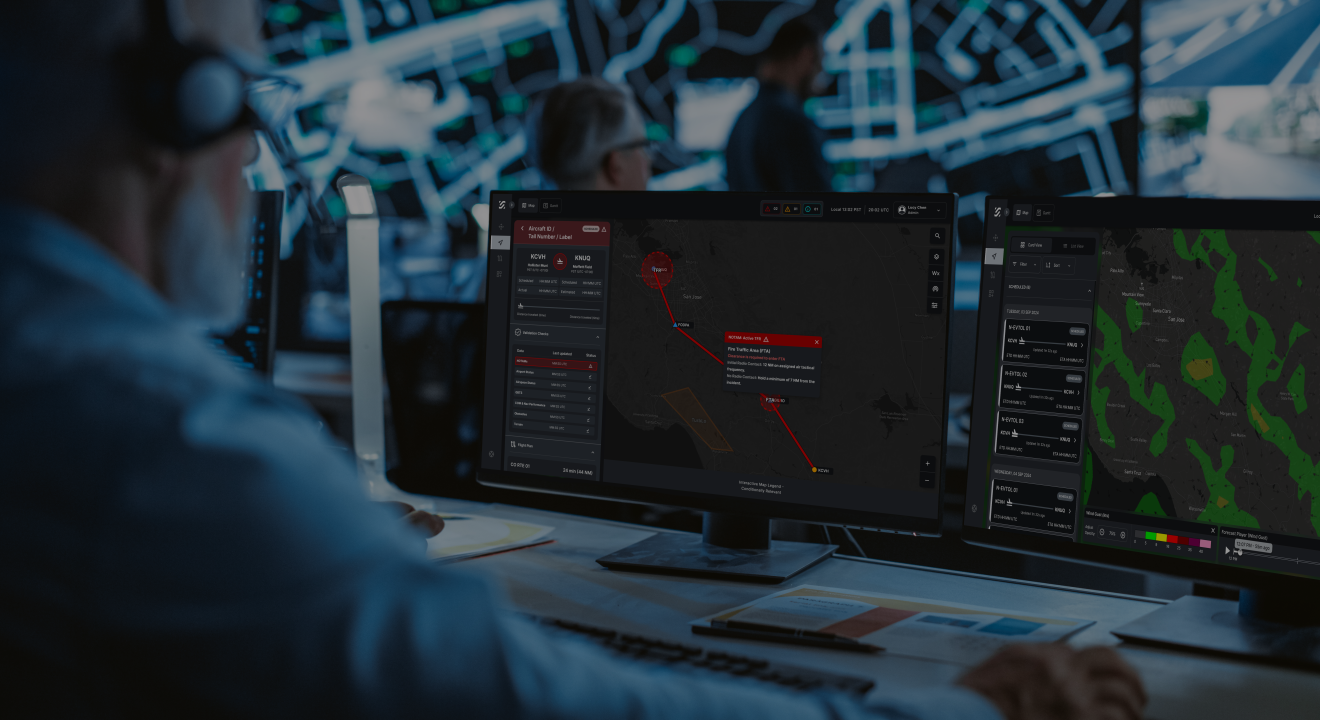Support from third-party services is needed to successfully integrate Advanced Air Mobility (AAM) into the current airspace system. SkyGrid’s new Concept of Operations (ConOps) for Third-Party Services Supporting the Airspace Integration of AAM focuses on how approved third-party services will aid the operation and integration of AAM under current Instrument Flight Rules (IFR) and Visual Flight Rules (VFR). As the first commercial Third-Party Service Provider (TSP) to release a ConOps detailing the role of third-party services, SkyGrid has created an operational blueprint for how TSPs can support the AAM ecosystem.
In the context of AAM, a TSP is a commercial entity that provides operators with data services and decision support to improve their situational awareness, operational efficiency, and airspace access. TSPs integrate various data from the AAM operating environment to provide actionable information and decision support services to AAM operators, facilitating the airspace integration of novel operations such as uncrewed aircraft.
As a TSP, SkyGrid will deliver high-assurance third-party services to aid the safe and efficient integration and operation of AAM in the current air traffic system. SkyGrid’s system aims to: enhance situational awareness by providing high-fidelity digital models of the airspace for pre-flight and in-flight decision-making; support uncrewed operations with high-assurance traffic awareness tools; increase operational efficiency by delivering flight planning solutions based on real-time airspace insights; and streamline airspace access while enabling scalability by minimizing the need for Air Traffic Control (ATC) intervention in AAM operations.
Current Airspace and Integration Challenges
The current airspace system is already highly structured and constrained. As a result, AAM operations will require technical solutions to navigate these complex environments effectively and efficiently. For example, AAM flights will need to be deconflicted from existing Instrument Flight Procedures (IFP) in terminal airspaces, which third-party services can assist with. In the future, as the tempo of AAM operations increases, ATC may reach the limit of how many aircraft they can safely manage simultaneously. To enable safe AAM operations as the flight load increases, services will need to be developed that reduce the workload required for ATC to manage these AAM flights– another area where TSPs can contribute.
Additionally, uncrewed operations will require new data services to maintain situational awareness and avoid hazards without a pilot onboard. Hazards typically avoided by onboard pilots will need to be designated to a ground-based system. If not addressed, these challenges may significantly limit the commercial viability and operational efficiency of initial AAM operations.
TSPs Addressing the Need
Third-party services enable AAM operations with greater operational efficiency, airspace access, and scalability. SkyGrid provides data services to help AAM operators better understand their operating environment, plan flights that meet local airspace constraints, and avoid unexpected hazards during flight.
SkyGrid will deliver four kinds of services: digital information services, strategic planning services, tactical planning services, and mission support services. Digital information services provide operators with a high-fidelity digital model of their operating environment for situational awareness, delivered through a high-assurance platform. Functions that support operators in planning AAM flights that are safe, efficient, and acceptable to ATC fall under strategic planning services. Tactical planning services help operators manage new in-flight conditions like hazards and constraints, and mission support services give operators the ability to track and analyze the performance of their operations.
Over time, the evolution of third-party services will be key to enabling future airspace concepts such as Extensible Traffic Management (xTM) and Automated Flight Rules (AFR). Learn more about our ConOps and read the full document here.

